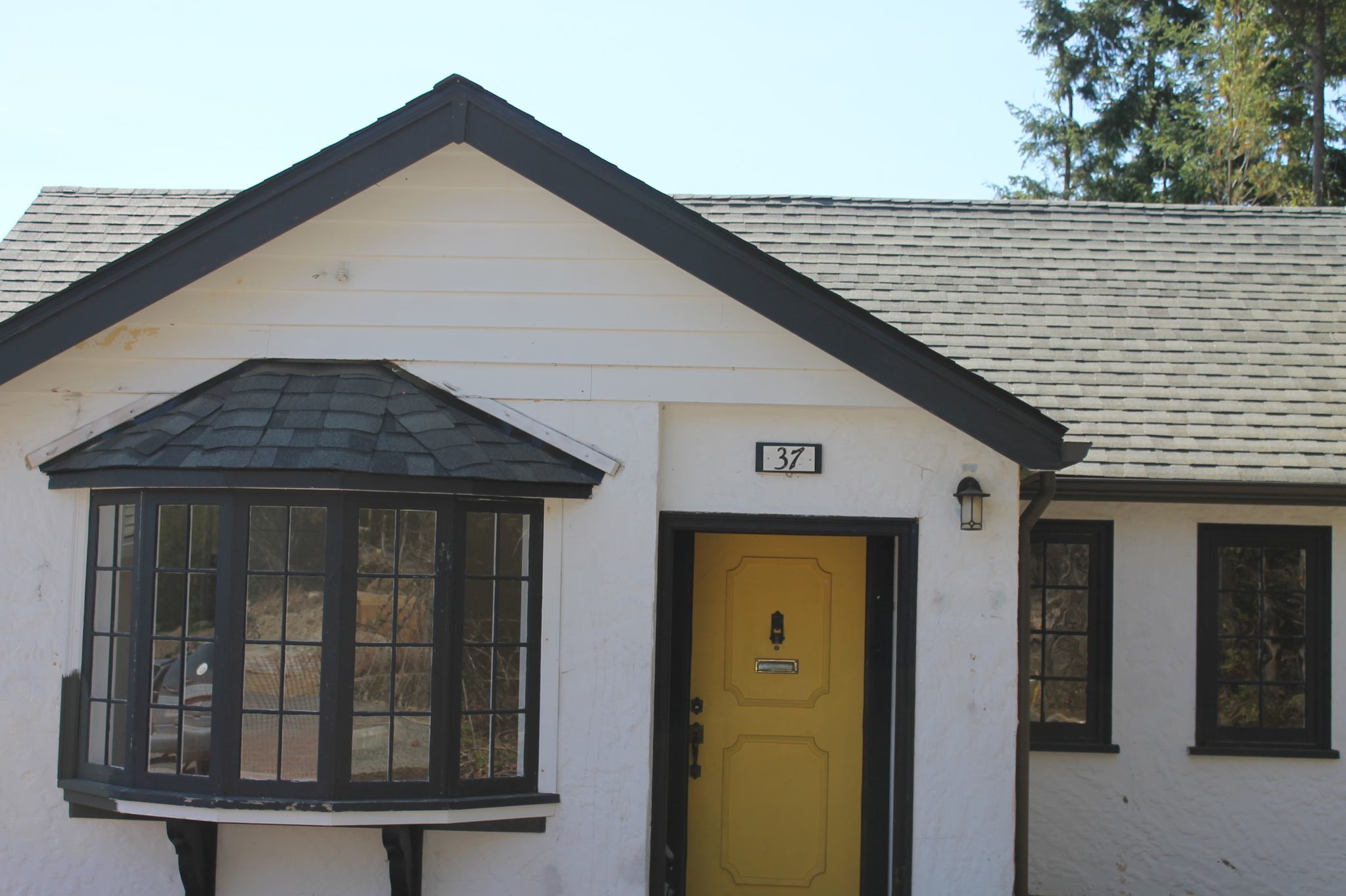Rep. Rick Larsen (WA-02) visited the San Juan Community Home Trust’s Sun Rise Neighborhood last Friday in an effort to learn more about the issues that affect islanders. The most recent project on the Sun Rise development has been renovating quaint cottages barged from Victoria, British Columbia.
“How do you get them through customs?” Larsen asked Home Trust Executive Director Nancy DeVaux.
“The Nickel Brothers, who barge them, handle that,” DeVaux replied, explaining customs was part of the package when hiring the house movers.
The Home Trust is a nonprofit organization on San Juan Island whose mission is not only to assist with affordable housing, but to keep its houses affordable in perpetuity.
Larsen’s visit comes on the heels of the primary election where he garnered percent 57.47 of island vote. The congressman is running for the Second Congressional District in the upcoming Nov. election.
Both unemployment and affordable housing have been a hot button issue on the islands in recent years.
San Juan County had a housing affordability index of 37.2, during the fourth quarter of 2015, and the second quarter of 2016 did not fare much better.
The county’s Affordable Housing Coordinator Melanie Rollins explained the index measures how much or percent of the median home price for a given area the area median household income can afford. A good index number Rollins said, is around 100, and San Juan County fluxuates between 37 and 47. This means, according to Devaux, there are few opportunities for people with median income, or lower, to buy a home.
“San Juan County has the lowest index in the state. I don’t think any other county in Washington comes close,” said DeVaux.
Devaux also mentioned the importance of the USDA affordable home loan program, which the home trust uses frequently.
“We primarily serve low and very low income families. We would not be able to do what we would do without this funding,” DeVaux said, voicing concern regarding delays in funding to the program.
“If this becomes a problem,” Larsen said, “let me know immediately and I will see what I can do.”
Larsen visited Phase I of the Sun Rise neighborhood in October 2012, which consists of six duplexes and triplexes as well as 14 energy efficient homes.
On the recent trip he was given a tour of the home trust’s Sunset Phase II site, which is located passed the Friday Harbor elementary school. Phase II consists of seven historic homes that were barged across the sea from Victoria. Five have already been bought and are almost ready for occupancy.
Home Trust homes are funded through private donations, Washington State Housing Trust Fund Grants, federal Self-Help Opportunity Program Grants, as well as grants and loans from San Juan County. In 2014, Washington state received a total of $3,864,026 in funding from the federal Self Help Opportunity Program.
According to a recent press release, Larsen says he has long-supported affordable housing programs including Community Development Block Grants, Supportive Housing for the Elderly and with Disabilities, and the Department of Housing and Urban Development Veterans Affairs Supportive Housing program.
DeVaux explained to Larsen that Sunrise Phase II uses funds from the federal Self Help Opportunity Grant, which requires that each homeowner put in 50 hours of sweat equity, “basically sweat equity light,” DeVaux said. Sweat equity refers to affordable home programs that require owners work a certain amount of hours in the building of their home, usually equalling a number of months worth of labor.
Larsen asked what kinds of projects did the homeowners do for their 50 hours, since these houses were already build. The hours, DeVaux explained consisted of cleaning up the construction site, and the houses, as well as painting a sealant on the foundation.
At the site, Larsen toured the cottages, each with a newly remodeled kitchen and energy efficient stackable washers and dryers.
“We have made the news in Victoria, because they were really sorry to see these houses go,” DeVaux said.
At the site, Larsen met with home trust board member Pete Kilpatrick, who is also owner of Ravenhill Construction, where they discussed the work put into each house.
“We have been pleasantly surprised at the material used in these houses,” said Sarah Crosby, Home Trust Board member, “Most of what we have had to replace was work done in the 70s.”



